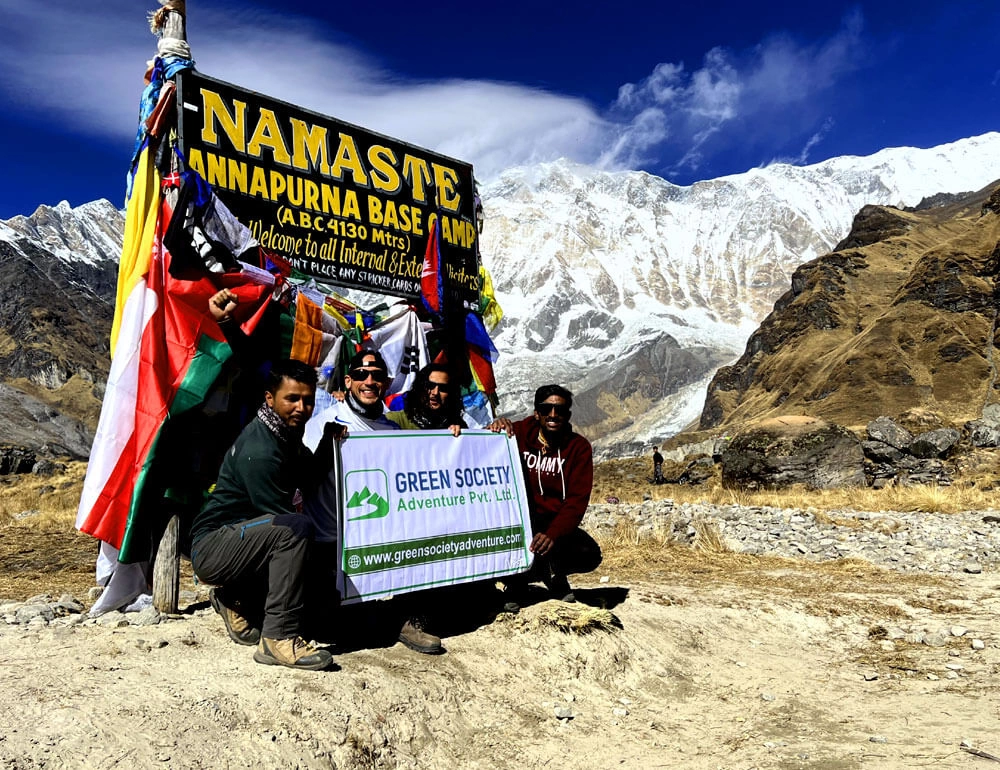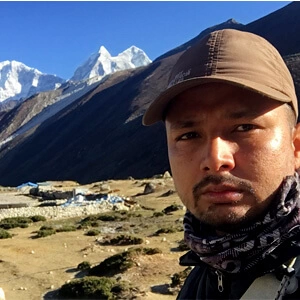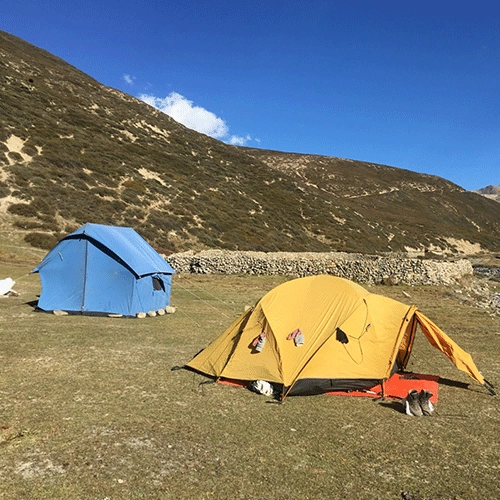Short Annapurna Base Camp Trek Difficulties
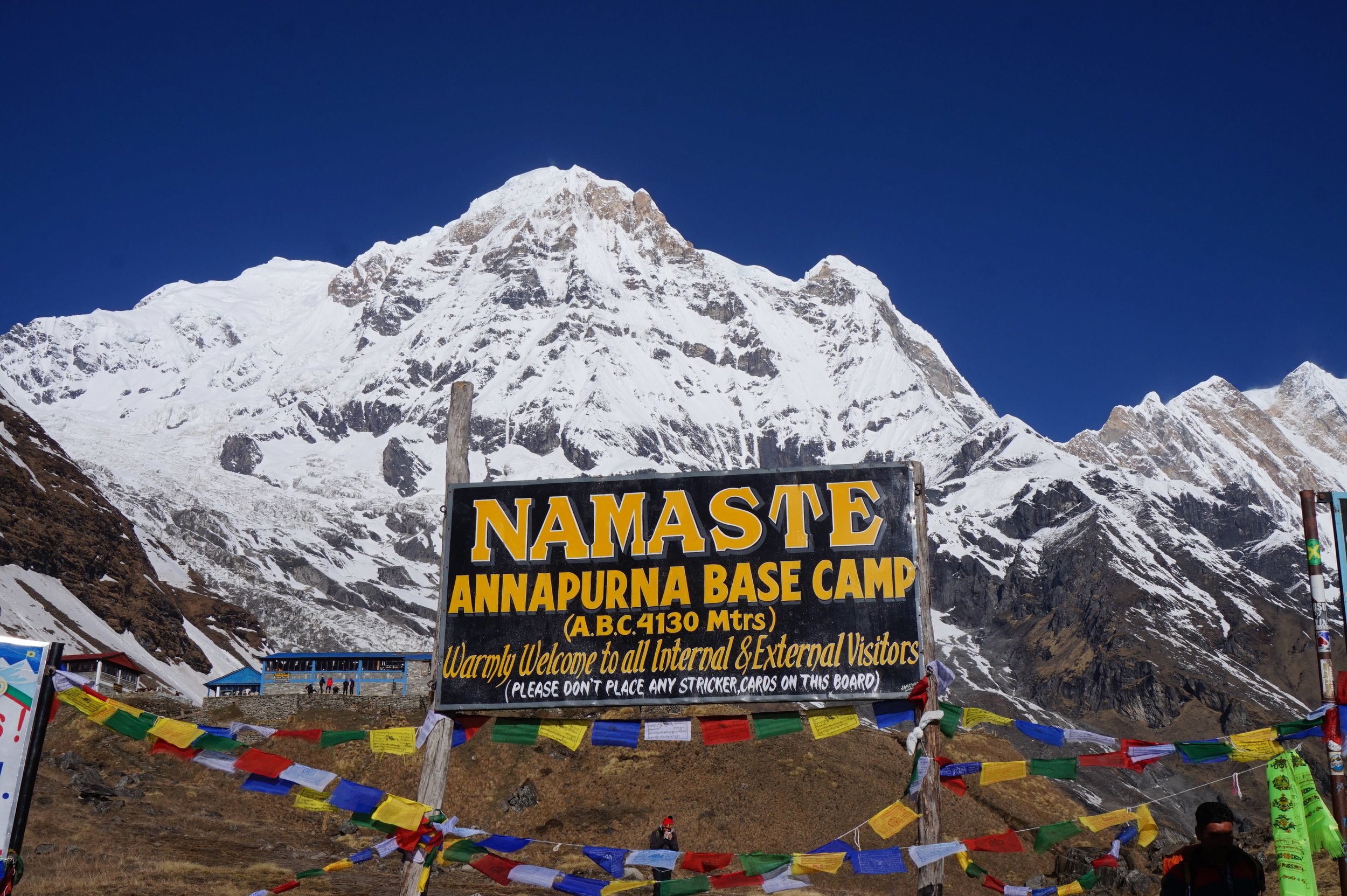
Long Trekking hours
The ABC trek covers an approximate distance of 115 kilometers/71 miles (round trip), and you will walk about 10 to 20 kilometers during each day of the journey. A short Annapurna Base Camp trek is typically completed in around 5-10 days, which is suitable for trekkers who are short on time. However, covering this significant trek distance in a minimum duration is surely a challenge. On average, you need to walk about 6-8 hours daily to complete the trek within the limited time.
If you are not habitual of walking longer distances for an extensive duration, the tiredness and discomfort can increase your hours of trekking per day. Besides your stamina, the duration of every day of trekking also depends on weather conditions and terrain difficulty.
In order to overcome the difficulty of Annapurna Base Camp related to duration and ensure easy and comfortable walking, you need to increase your strength and day-to-day trekking capacity. So, it is advisable to undergo physical training and stamina-building exercises before the journey, such as long-distance jogging, uphill and downhill walking, squatting, plank, lunges, push-ups, deadlifts, cycling, skipping, etc.
Being in good physical shape ensures your readiness for the adventurous trek in the Himalayas. Engaging in strength and endurance training helps to prepare your body to get used to walking and enriches your adventure experience. Cardiovascular endurance is essential for overcoming long hours of trekking, and muscular strength will help you traverse uneven and steep trails seamlessly.
Altitude Sickness and Less Acclimatization Days
The ABC trek reaches its maximum altitude of 4,130 meters/13,550 feet at the base camp. During a short Annapurna Base Camp trek, you will start the journey from a low altitude of Kathmandu, at 1,400 meters, and reach the significant elevation of the base camp within just a few days.
The air gets thinner, and the level of oxygen decreases more on gaining higher altitudes, which makes it difficult to adjust your body in a new environment and elevation. Upon crossing the altitude of 2,500 meters, the symptoms of altitude sickness start to make you feel uncomfortable. Altitude sickness symptoms include headache, dizziness, loss of appetite, vomiting, shortness of breath, rapid heartbeat, sleeplessness, and so on. To mitigate altitude-related issues, gradual ascent with enough time for acclimatization is essential.
Since there are no acclimatization days in a short variation of the ABC trek, there is a high possibility of altitude sickness occurrence, making your trip a difficult experience. So, if you notice any signs of altitude symptoms, descend to a familiar altitude region and do not ascend further until the symptoms of altitude sickness get better. Likewise, keep yourself well hydrated, take a nutritious, balanced diet, and avoid smoking and alcohol to keep altitude problems at bay.
Trek route and Terrain
During the short ABC trek, you will encounter diverse Himalayan terrains such as steep stone steps, rocky and uneven surfaces, winding trails, and rugged narrow passes. The inclined ascents and descents on rocky boulders and rugged mountainous landscapes require physical endurance to navigate safely and successfully. Being in good shape and possessing proper stamina helps you to pass through the moderately challenging trekking trails of the short Annapurna Base Camp trek.
Beyond physical strength and fitness, a positive and flexible attitude with strong determination is what counts more for a victorious journey. Mental preparedness and resilience push you to pass through the difficulties of the trek by tackling obstacles in a calm and composed manner.
If you are well-informed about the expectations of the journey, you can mentally prepare for the difficulties you might face. So, stay prepared before the trek by researching the trekking route and destination, understanding the terrain and possible challenges, and familiarizing yourself with the trekking gear and equipment.
No Reserve Days in Case of Bad Weather
The high-Himalayan climate is unpredictable and changes in no time. Plus, adverse weather and colder temperatures can strike the high-altitude journey at any time.
If your journey encounters bad weather conditions like heavy snowfall, rainfall, fog, blizzards, etc, you cannot proceed forward in the trek with ease. You have to wait until the weather gets better, which may cause potential delays. While in a short itinerary, you will have less time on the trail and need to cover the journey within a limited time. So, if the weather worsens, the lack of reserve days causes uncertainty to the journey and exposes you to troubles.
Should I Choose Long Duration Annapurna Trek?

The Annapurna region offers remarkable adventure experiences for worldwide trekkers and mountaineers. It provides several trekking alternatives to enthusiastic travelers and explorers taking through diverse landscapes, including lush valleys, glacial rivers, rocky cliffs, cascading waterfalls, vibrant forests, quaint villages, and high mountain passes.
The most popular trek in the region, the Annapurna Base Camp trek, comes with several variations in terms of route, duration, and side trips. Each of these journeys in the pristine Annapurna region offers spectacular views of the Annapurna Himalayas and rich cultural encounters along the way.
The shorter and longer variations of the Annapurna Base Camp trek can differ in terms of difficulty level, scenery, immersion, and overall experience. After a comprehensive analysis of the short and long ABC trek, you can make an informed decision for your desired adventure. You can choose the duration of the trek that aligns best with your experience level, fitness and available time and budget.
Let's look over the differences that you can experience during the short and long-duration ABC trek as per our previous experiences.
Duration and Distance
A short Annapurna Base Camp trek can be completed in 5-6 days. However, this accelerated version of the ABC trek is suitable for experienced trekkers. Because of the short itinerary, you will get minimal rest days and need to walk for longer hours each day. You need to make quick ascents and descents, which cause more physical strain and exhaustion. Likewise, the shorter duration directly impacts the acclimatization process, which is related to the adjustment of the body to the changing/rising altitudes.
On the other hand, the long-duration Annapurna Base Camp trek, which lasts for around 15-20 days, is perfect for trekkers seeking a longer and more immersive trekking experience. This variation usually combines the Annapurna Base Camp trek with the Annapurna Circuit, encircling the Annapurna massif. You can get additional rest days or experience and enjoy the side trips along the way. So, you can also explore the nearby beauty and attractions of the trek by taking a short detour to the scenic viewpoints.
Opting for the longer version of ABC Trek allows you for a leisurely and comfortable pace with ample time for exploration along the way. You will also get more opportunities for cultural immersion and acclimatization. Because of more rest days, you can make slow ascents, resting, acclimatizing, and sightseeing the journey. Conversely, while the extensive ABC trek requires a longer time commitment, the short one is the more time-efficient option. For trekkers with limited holidays, a short ABC trek allows them to explore the captivating beauty and breathtaking mountains of the Annapurna region without committing to the long duration.
While a seasoned trekker can cover the day-to-day walking distance more swiftly, a novice trekker could require additional time to complete the same distance. So, if you are opting for the high-altitude mountainous trek for the first time, the long Annapurna Base Camp trek can be your best choice. As a beginner, you can also go for the average duration (11-14 days) of the Annapurna Base Camp trek itinerary, which can give you more days to complete the trek even if you walk at a slow and relaxed pace and still do not miss out on the important highlights of the journey.
Level of Immersion
The short and long ABC treks provide different experiences of traversing the scenic and cultural diversity of the Annapurna region, from rhododendron forests, terraced fields, and traditional rural villages to rocky terrains and pristine white Himalayas.
The shorter version of Annapurna Base Camp is a hurried trip with less immersion along the way, as it mainly focuses on the mountain views rather than the varying landscapes and cultural exposures. So, this short trip may lack or skip the beauty and diversity that are widely encountered on the longer treks. You can catch a glimpse of the beauty and wonders during the trek but cannot entirely delve into it.
In a short-duration trek, you can only have a quick glance at their unique costumes, art, architecture, and hospitality while navigating through diverse ethnic communities, such as Gurungs, Thakalis, and Manangis. Besides, on the longer ABC trek, you can leisurely communicate and interact with the local people in the traditional villages and teahouses along the way to have a deep learning and understanding of their rich culture and resilient way of life.
Acclimatization
Proper acclimatization is important while undertaking any high-altitude trekking adventures, which is crucial to avoid altitude sickness. Acclimatization helps the body to adapt to the lower oxygen levels of the alpine elevations. Walking at your own pace helps to assist the acclimatization process.
The longer treks generally include side trips to higher viewpoints, increasing the overall altitude gain. The significant altitudes reached during the journey can also pose the challenges of altitude sickness. However, longer trekking packages with enough acclimatization days allow for a well-rest at shifting elevations that helps your body adjust to the rising elevations. Long-duration trek covers distance with more gradual altitude gain, allowing for proper acclimatization and reducing the possibility of altitude sickness.
During the short treks, acclimatization can be affected due to the limited time in which the body cannot properly adjust to the altitude changes. You may have to rush for the journey by ascending more quickly, which accelerates the risk of altitude illness. So, in both cases, there is an equal chance of occurring altitude sickness. However, in the short trek, you will not have enough time for proper acclimatization, whereas, in the long-duration ABC trek, the itinerary involves required acclimatization days that help to minimize the risk of altitude sickness.
High Points of a Short Annapurna Base Camp Trek
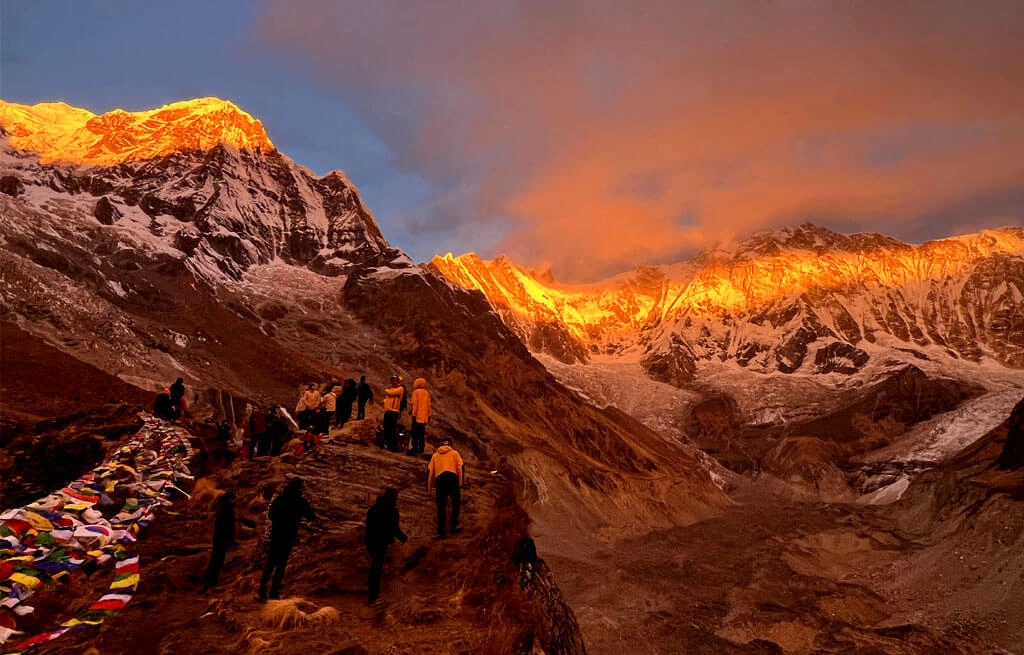
Budget-friendly and Time-saving: The short ABC trek is a cost-effective and time-efficient way to explore and experience the beauty and highlights of the Annapurna region. You can complete this amazing journey of reaching the base camp of Mount Annapurna within a shorter duration and with budget constraints.
Unparalleled Mountain Views: The short trek to Annapurna Base Camp allows you to catch spectacular close-up views of the majestic mountains, including Annapurna, Machapuchare (Fishtail), Hiunchuli, Gangapurna, Singu Chuli, Tent Peak, and other neighboring peaks in the Annapurna region in a relatively short period.
Less Challenging: A short ABC trek is the perfect option for trekkers who like to have a less physically demanding adventure. Compared to a longer version, a short ABC trek is less challenging as it doesn't involve any side trips to high-altitude viewpoints and extensive physical endurance. Trekkers with a moderate level of fitness can enjoy this trek.
Cultural Exchange: Despite the fact that cultural exchanges are more limited to longer treks, you can have some extent of cross-cultural experiences during the journey. Although you cannot deeply soak into the cultural diversity of the Annapurna region during the short ABC trek, you can still get the opportunities to communicate with the local people and learn about the unique culture, traditional practices, and way of life of people.
Less Logistics: Unlike longer treks, a short trek doesn't require detailed logistical planning, such as provisions for extended stays, additional supplies or permits, and arrangements for side trips. The simplicity of logistics makes the shorter treks more manageable for beginners or trekkers with limited resources.
You may also like:
Conclusion
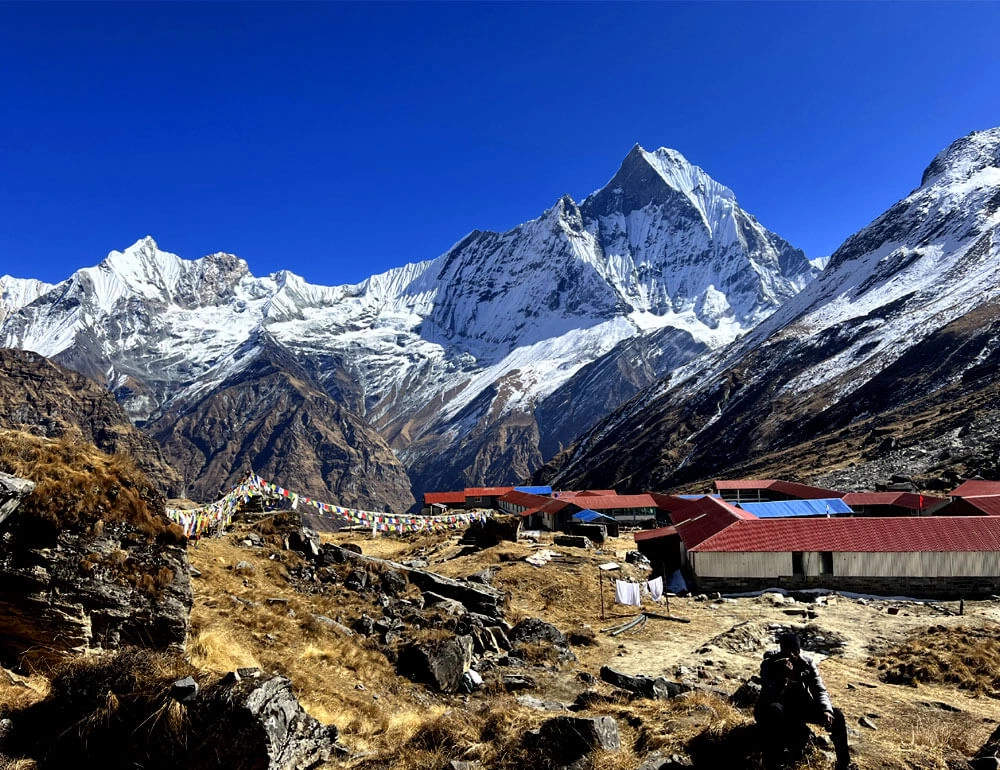
Both the short and long Annapurna Base Camp treks provide wonderful trekking experiences in the Annapurna region. However, you can choose between the two depending on various factors such as your health conditions, strength, stamina, endurance, fitness level, available time, and preferred difficulty level.
If you want to have a slow and relaxed trekking experience, the longer variation of the ABC trek is an excellent option. Though the journey will be more physically demanding, you can explore the diverse landscapes of the region at a leisurely pace. You will be rewarded with awe-inspiring vistas of the mountains, along with a chance to thoroughly explore various ethnic groups along the way.
Whereas, if you are less on time and prefer an easier or more manageable trek, the short Annapurna Base Camp trek is a perfect choice. It will offer you a more intensified mountain experience focusing on the beauty of the Annapurna massif and other lofty Himalayas in the Annapurna region. You can enjoy the magnificent close-up view of the majestic snow-covered mountains within a very short duration.
Overall, both treks allow you to witness the grandeur of the Himalayas, soak in diverse cultures, and experience unforgettable adventures through remote trails and captivating high-altitude landscapes.
